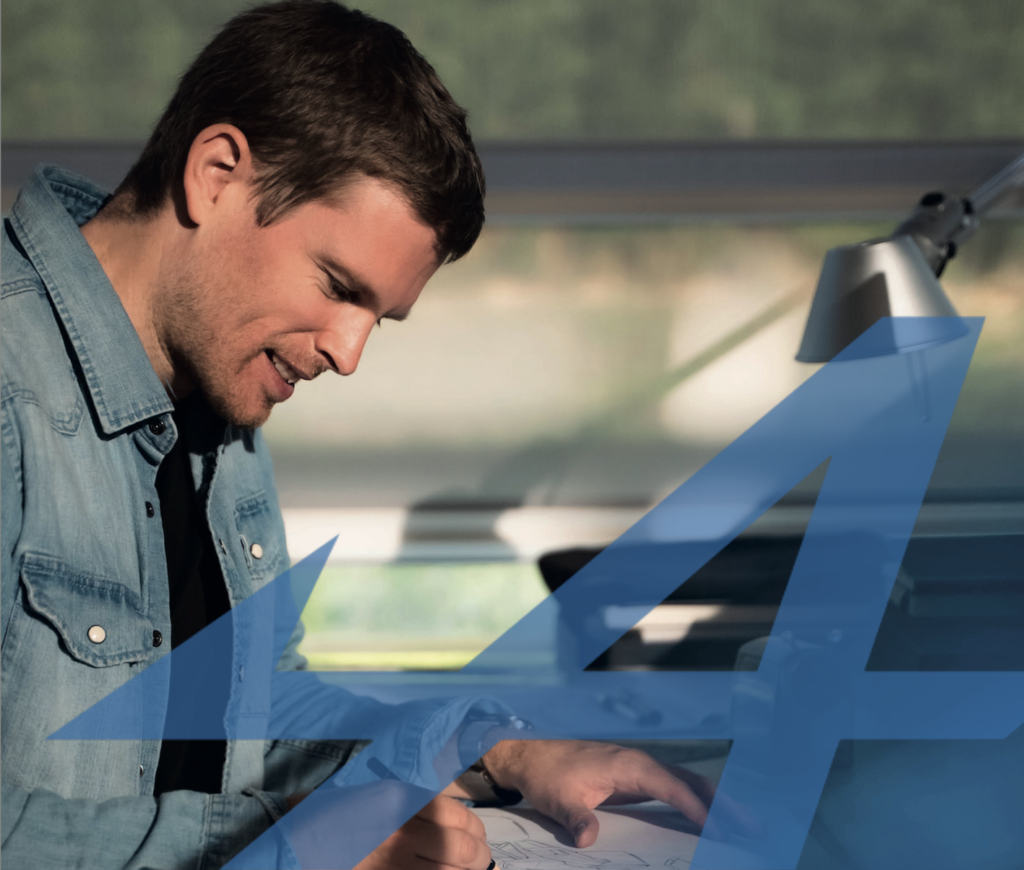
INDEED: your LIGNES/auto site offers you the chance to download the bilingual PDF of the “Alpine dossier” with this interview and an archive subject. It’s easy to read on a computer, just like a paper magazine article, and is a pleasant addition to the site. It’s free and here:
Since 2021 and the ‘Renaulution’ plan, when we learned that Alpine was becoming a brand in its own right, with an ambitious range, the design team has been strengthened. One of the designers whose pedigree caught our eye was Adrien Acquitter, who left Ferrari design to join Antony Villain’s team. We caught up with him to find out a little more about this designer who, in his – rare – spare time, illustrates himself with exquisite sketches that he prefers to digital drawings…

Why did you choose the design school in Nantes for your training?
“When I decided to go into design after my A-levels, I first went to the design school in Nantes (https://lecolededesign.com/fr). I was interested because I wanted to have this first experience to confirm my choice of car design. It’s a school with a good reputation in industrial design in general. In principle, the first years of specialised schools like this one are not immediately focused on a specialisation. These first years are for learning the basics. So I said to myself that I could always change schools if I didn’t like it.”
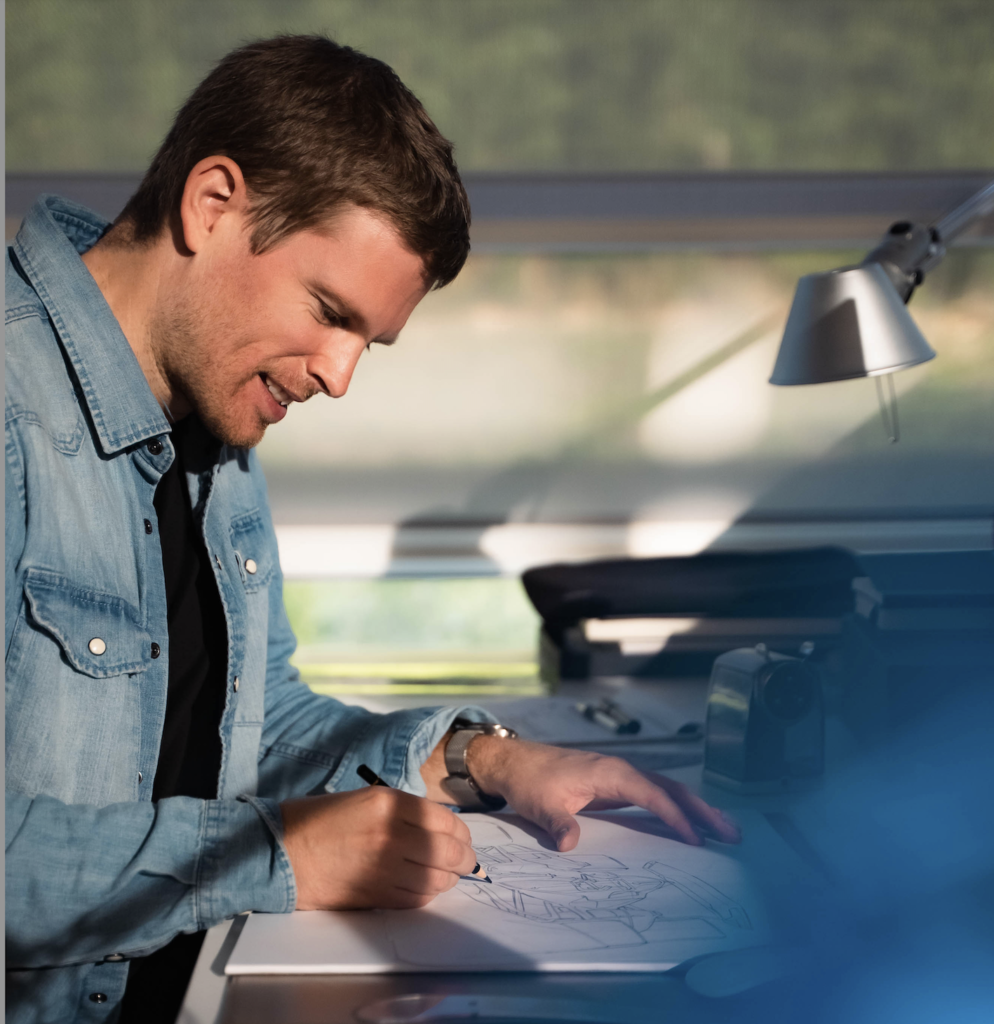
But then you went to Strate Collège in the Paris region!
“Yes, because I wanted to specialise quickly in Transport Design. I had several interviews at Strate (https://www.strate.design/) and ISD in particular – now known as Rubika (https://rubika-edu.com/). Strate offered me direct entry into the second year, which wasn’t possible with ISD at the time. So I chose Strate, but it could have been either, I didn’t have a preference.”
At this point, do you want to become an interior or exterior designer? Was it already time to make that choice?
“What interested me most of all was becoming a car designer, but I didn’t have a preference between inter or exter design. Let’s just say that ¾ of students go into exterior design, but I think it’s good to remain open-minded and not close any doors.”
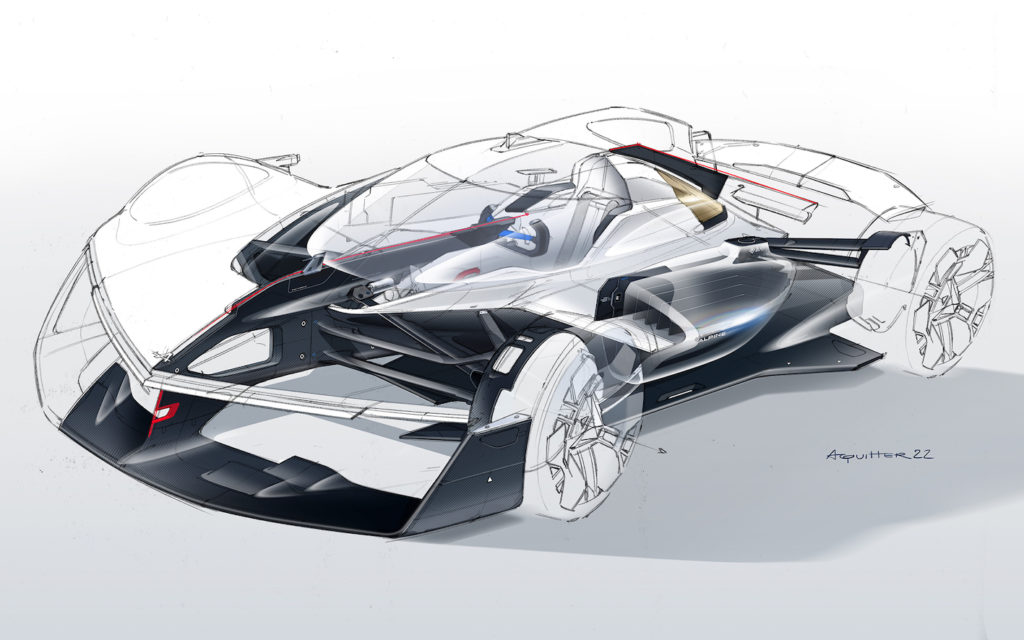
Today, you specialise in interior design at Alpine. But you signed some of the exterior design sketches for the Alpenglow concept car, above…
“I’m in interior design, and for the Alpenglow it was specific because the architecture of the powertrain required a symbiosis between the exterior and the interior, particularly with the hydrogen tanks.”
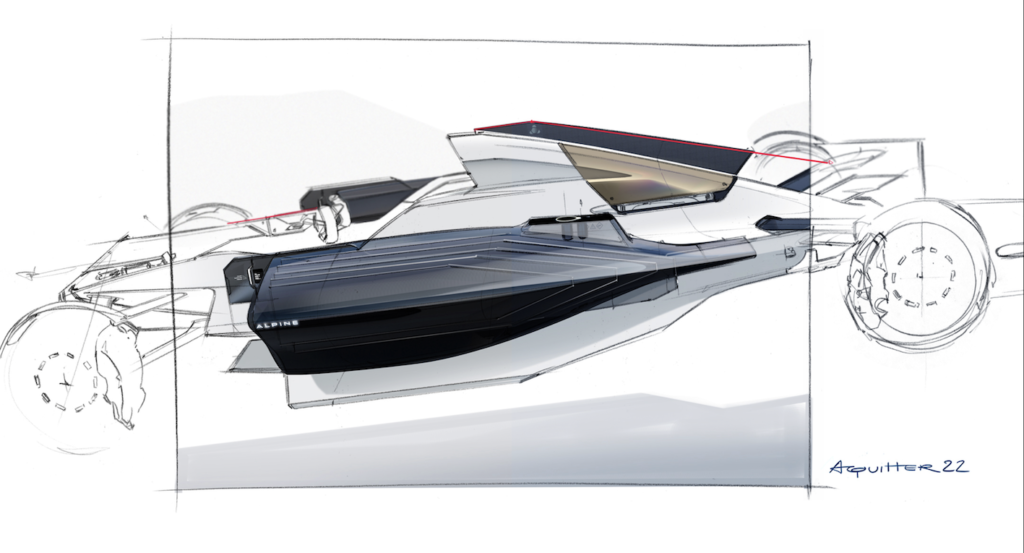
During your studies and training, you did your first stint at Renault in 2014…
“We had a partnership with Renault for an exchange of about six months with designers. I worked on the Clio V project. It was very rewarding because we worked on the interior as well as the exterior, and even on the colours and materials! At the time, we presented our work to Laurens van den Acker at the Technocentre…”.
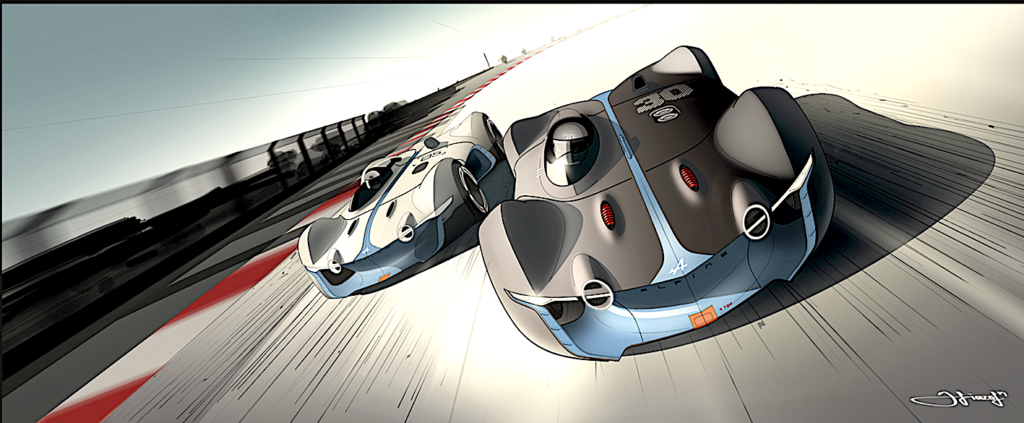
In 2014, were you already hearing talk of Alpine in the design corridors?
“There was already the Gran Turismo project (above) and yes, we could feel a tremor. I imagine it was already the start of the A110 study .”
Looking for a work placement during your five years of study seems complicated these days, given the number of students. You chose to do yours at Kiska in Austria. Is that surprising?
“No, because the company is very much geared towards the automotive industry. You should know that in 4th year you have a compulsory placement abroad, or an exchange with another school. I wanted to be at the heart of a company, surrounded by professionals, so that I could progress more quickly. I chose Kiska (https://kiska.com/). They have a Transport Design department and work with Husqvarna and KTM motorbikes. They also work with car manufacturers such as Audi, Opel and other major brands. Going there didn’t mean closing the doors on me – quite the opposite. I worked on all kinds of vehicles, and it was very rewarding in a small structure where I was surrounded by many designers of different nationalities.”
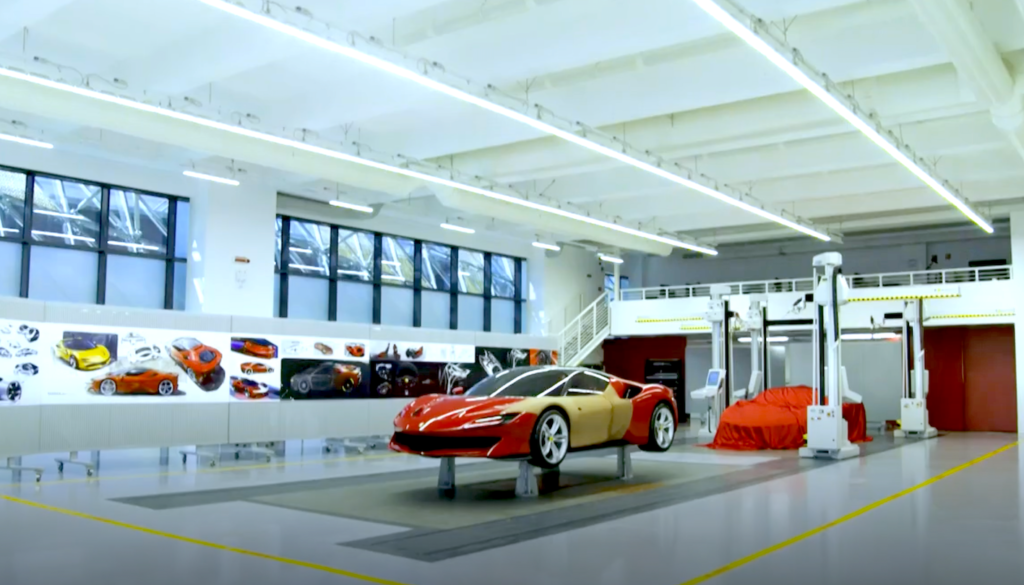
And then you arrive at a legendary company: Ferrari, above!
“I did some work for them during my degree year, and went for an interview at Maranello, where I met the head of design. He offered me a work placement, which I didn’t turn down! After my internship, they simply offered me a job and I stayed at Maranello for over six years.”
It’s quite something to work in Maranello!
“To live and work here when you’re passionate about motor sport is pretty incredible. Being able to go into the factory and meet the people in charge was pretty crazy, and it’s still a period that I wouldn’t regret for the world!”
Where is this design centre located?
“It’s right in the heart of the factory. It’s a new building dedicated to design and customisation for certain customers. Being at the heart of the factory was important for design, to show that everything starts here.
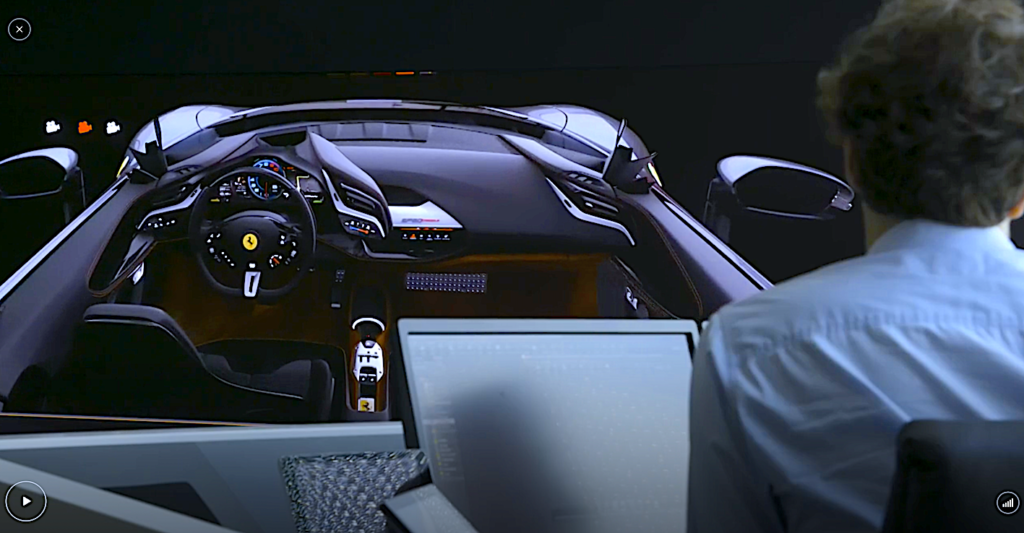
Was Pininfarina still a consultant at the time?
“When I arrived, there were still a few relationships on projects. But the cars coming out today are exclusively designed by Ferrari. Personally, I started my work with the Pista, the face lift of the 488 and then there was the incredible SF-90. I worked on that project for at least three years. But I also followed the Monza, which had a relatively short gestation period, and the Purosangue crossover project.”
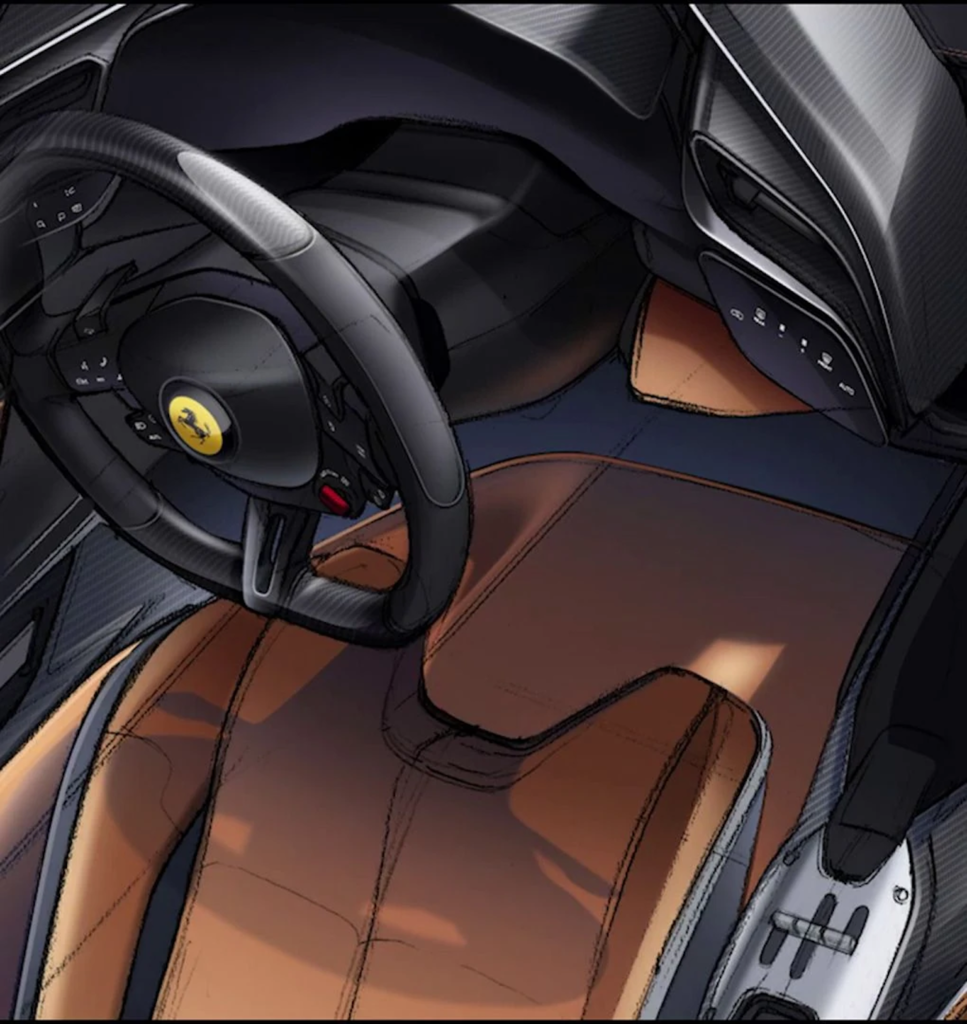
Then you left Ferrari. Had you had enough of pasta?
“Before I left for Italy, I said to myself that I was going to be there for five years, to at least follow a project from A to Z. I stayed for more than six years and then I felt like a change. I stayed for over six years and then I felt like making a change. Not because I felt I’d done it all, because I could have stayed at Ferrari for 20 years. Every project that came along was incredible, and we wanted to work on all of them, but I wanted to do something else.”

And you called Antony Villain to join him?
“Not directly. I first contacted Laurent Negroni, an Alpine designer who was involved when I was a student at Strate. I called him to find out if he was looking for designers, and it all happened very quickly. Antony Villain called me back and explained the brand’s future and current projects. I was immediately attracted, because it was quite a challenge and a new experience to be involved in expanding the range. That’s what I wanted: to be back with another team and other projects.”
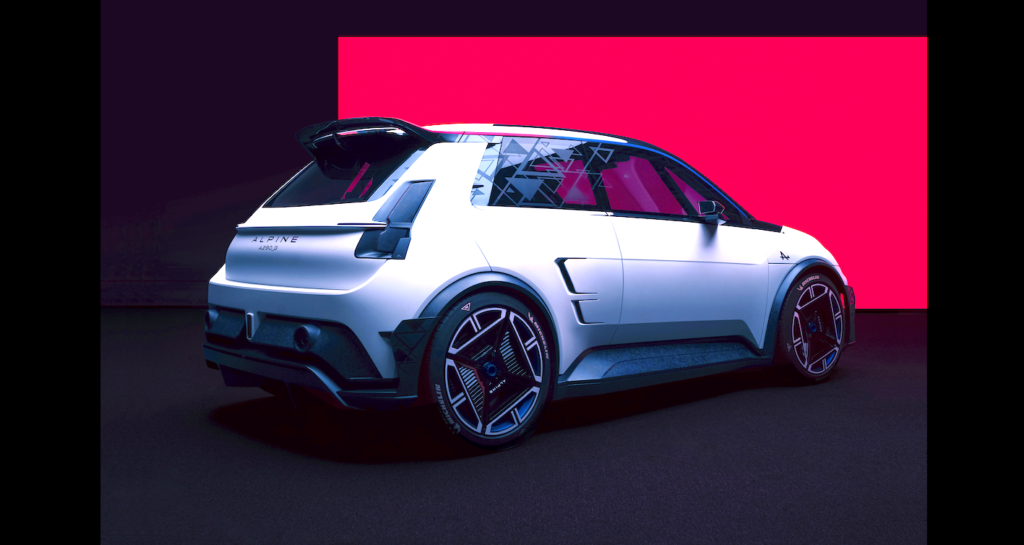
LIGNES/auto recently interviewed Frédéric Duvernier, Lancia’s head of exterior styling. He spoke of a sort of commando team. Is it the same at Alpine design?
“Our team is small compared with Gilles Vidal’s (Renault design) team, for example. There are five of us working on interior design, plus the person in charge. For exterior design, there are a few more, but yes, we’re still a small team.”
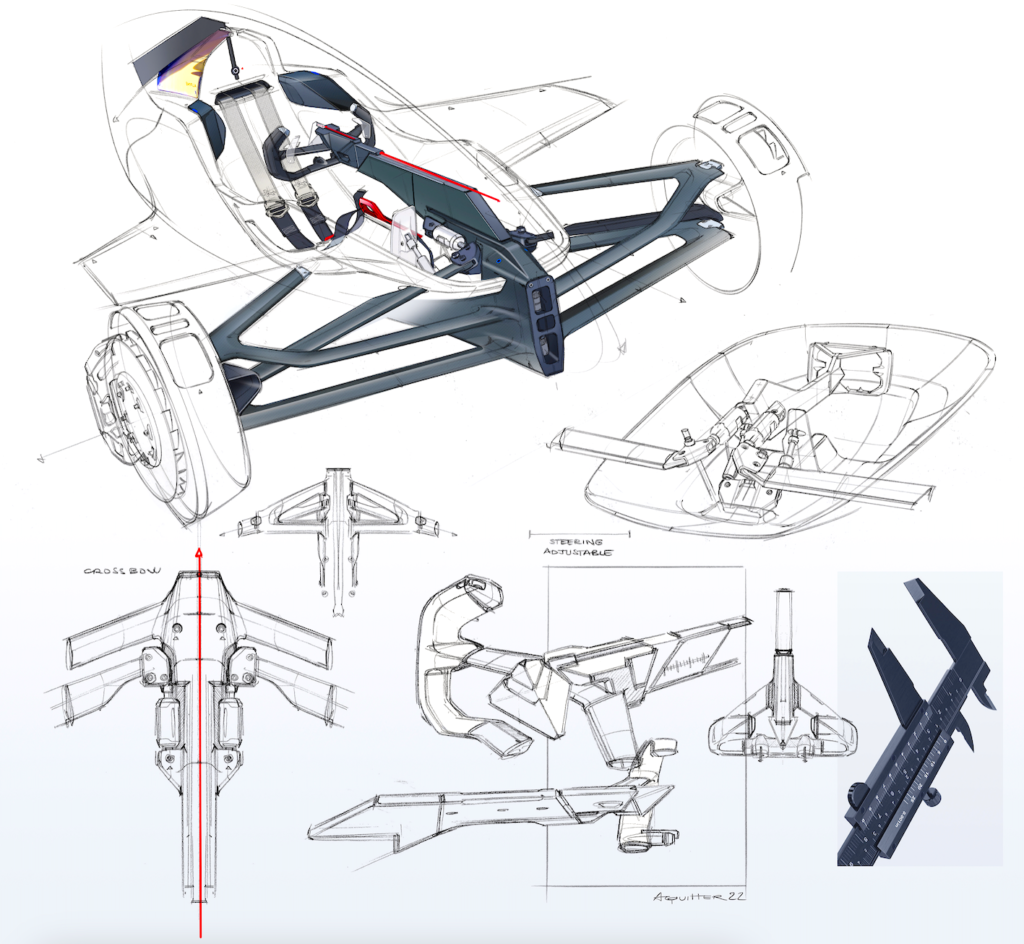
Are you dedicated to Alpine? If Gilles Vidal needs any help, could you swap places?
“We are dedicated exclusively to Alpine design and I think here we already have a lot of vehicles to develop!”
Given the ambitious product plan, perhaps there aren’t enough of you?
“For the moment we’re doing well. We’ll see what happens next.”
Talking of the product plan, were you aware of the Dream Garage and the first three Alpine models when you arrived?
“Yes, I was aware of the three vehicles announced (the A290, the C-XO GT crossover and the A110 below), but I learned about the rest of the programme, the post-Dream Garage, internally later. The product plan is ambitious, and I like a challenge.”
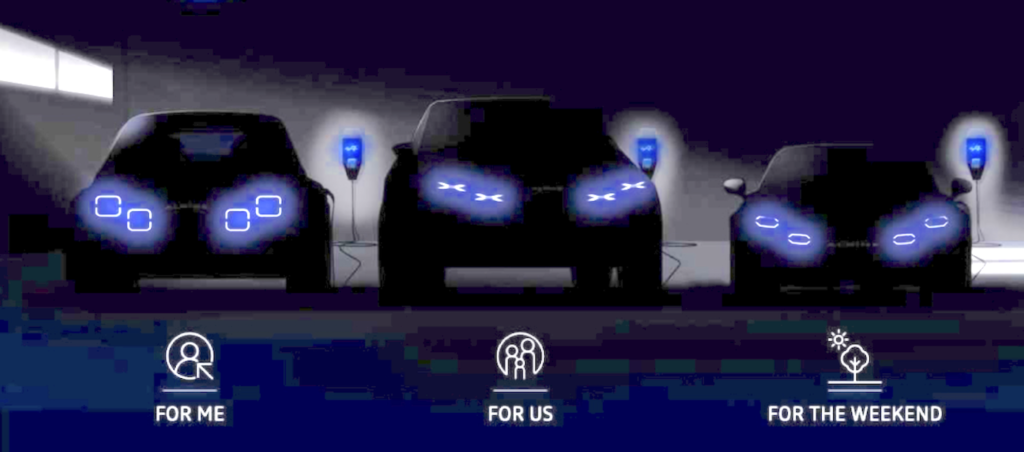
Alpine now has its sights set on international markets, and in particular the USA with the two future D-XO GT and E-XO GT. Do you design differently when you’re targeting American customers?
“Alpine is not just targeting the American market. We’re going to arrive in other countries. But design-wise, I wouldn’t say it’s fundamentally different. We just have to take into account a few more standards and constraints to be absorbed, but our design will be the same. We’re not going to change our design depending on the region. Alpines sold outside Europe will remain Alpines. And I think that’s what makes the brand so successful abroad: Alpine’s history, what it conveys and its French sports car design.”
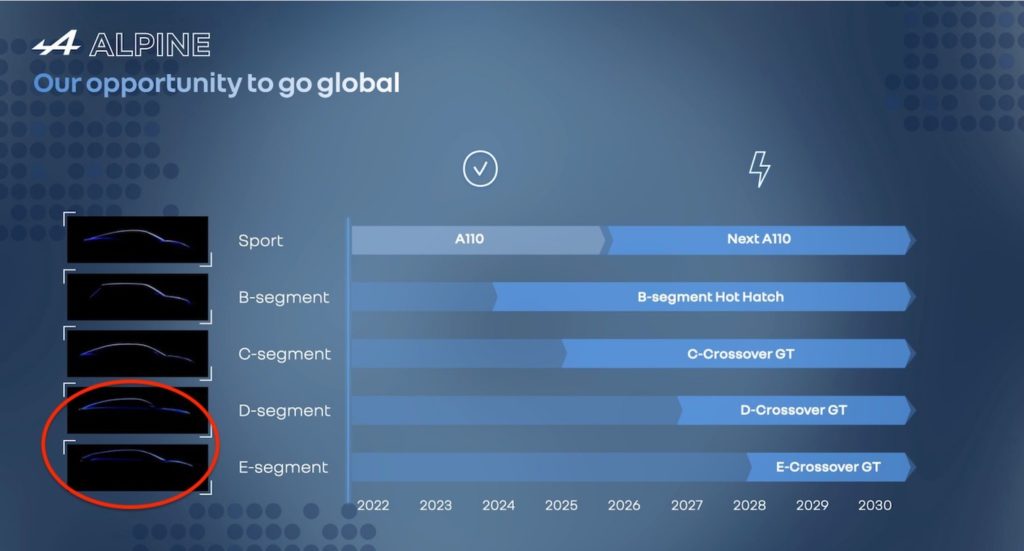
Did Antony Villain tell you about the key words in Alpine design? What are they?
“For the interior design, it’s lightness that’s going to come first. Not just visually, but physically. From the very first stroke of the pen, we’re going to design a part for its use and its function, and therefore lightness, a strong element in the Alpine DNA”.
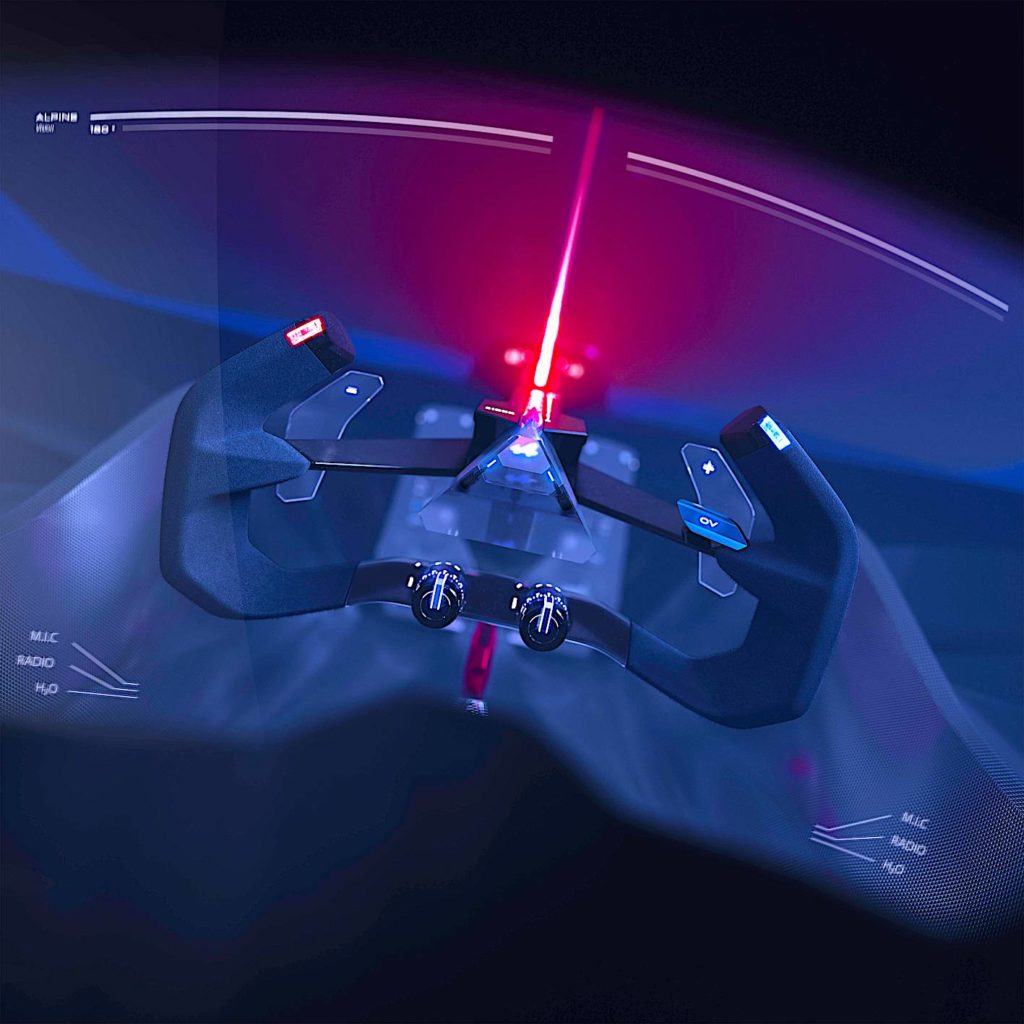
It’s always complicated to hear people talk about lightness when it comes to electric cars. As with the 2.6-tonne Lotus Eletre, a brand that favoured lightness…
“So, battery problems aren’t my area of expertise! What I can tell you is that when it comes to the interior design of the Alpine, the sensation of lightness will be very much in evidence. But we’ll also be focusing on the concept of driving, of course. The emphasis will be on the driver’s area, what we call the ‘driver’s axis’, which can be seen on the Alpenglow and the A290 concept car. Then, lightness is achieved through the treatment of small elements and details. When it comes to exterior design, there are always tricks that can be used to achieve this lightness, by playing on the colour scheme, the proportions and, more simply, the original design!”
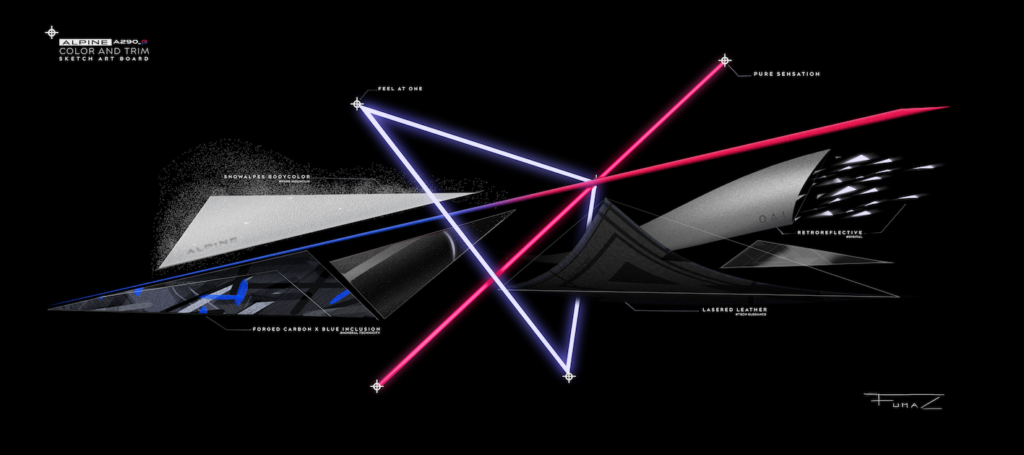
When you’re a brand with smaller volumes than the giants, are you subject to the same desire to use sustainable materials on board?
“Yes, of course, we have to work hard on this, just like our competitors. And we’re getting there. It will even be part of our communication on the interiors. We’re trying to maintain the brand’s identity, without closing ourselves off to something too retro, and projecting ourselves into the future of the range by creating our new interiors.”
As far as screens are concerned, will you be obliged to draw on the shelves of the Renault group’s organ bank or will you have your freedom of action?
“As far as the HMI is concerned, it’s more or less the same throughout the group. As far as screens are concerned, we have a great deal of freedom and we are in the process of developing our own vision, typified by the Alpine DNA, for current projects. You’ll see it soon, but it’s too early to talk about it.”

After all, you have a lot more work to do than at Ferrari!
“No, it’s more or less the same, because you mustn’t forget that Ferrari has a rich range, and a lot of unique or limited edition cars.”
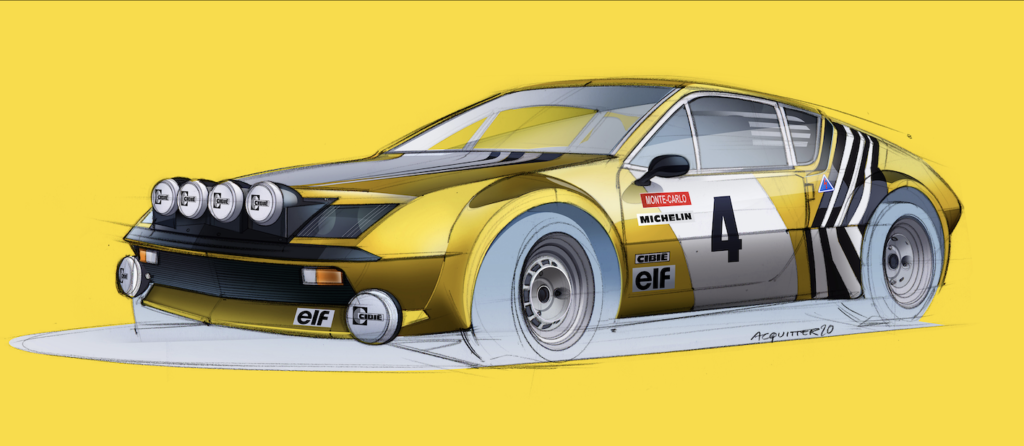
As well as your job, you have a few artistic hobbies…
“I have a number of hobbies, including illustration, photography and video. The good thing is that I can also integrate them into my professional life. In fact, it’s one of Laurens van de Acker’s wishes to encourage designers to express themselves outside their day-to-day work.”
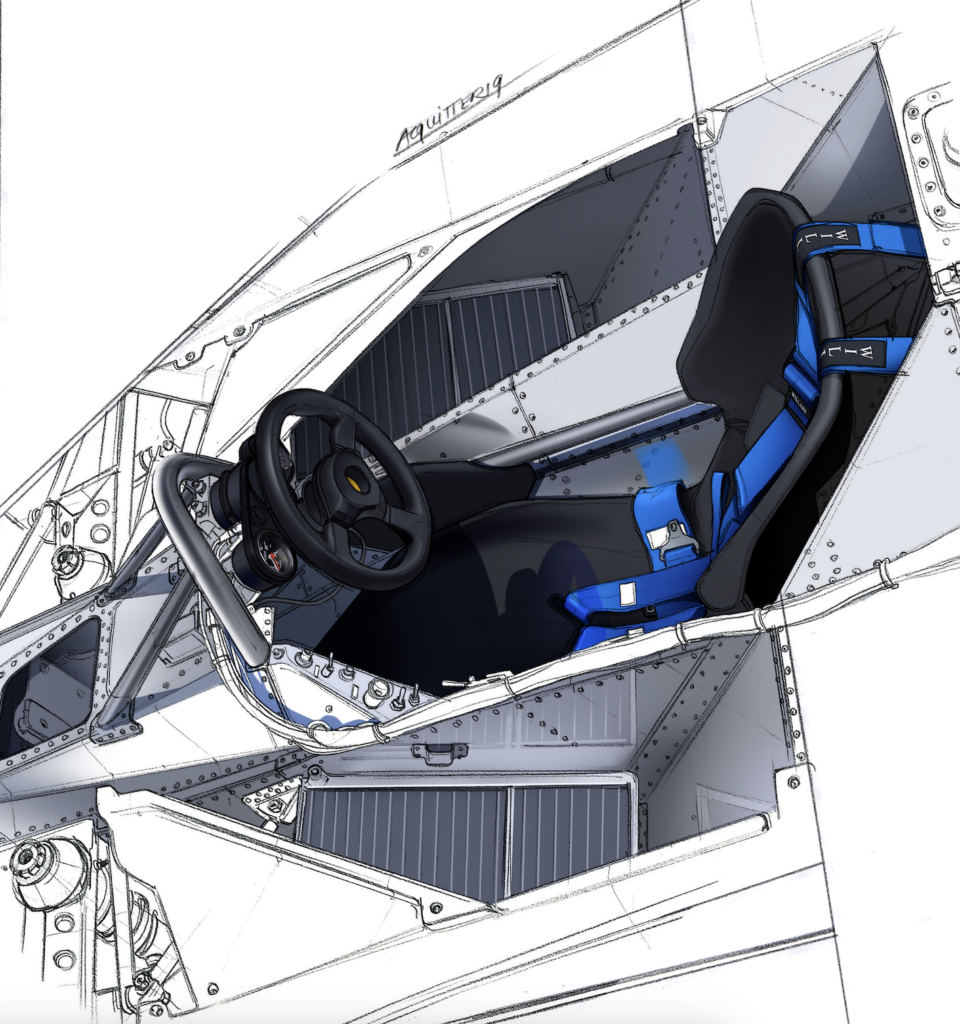
To complete this subject, read the long interview with Antony Villain (below), head of Alpine design, which was broadcast at the presentation of the A290 concept car: http://lignesauto.fr/?p=28873


